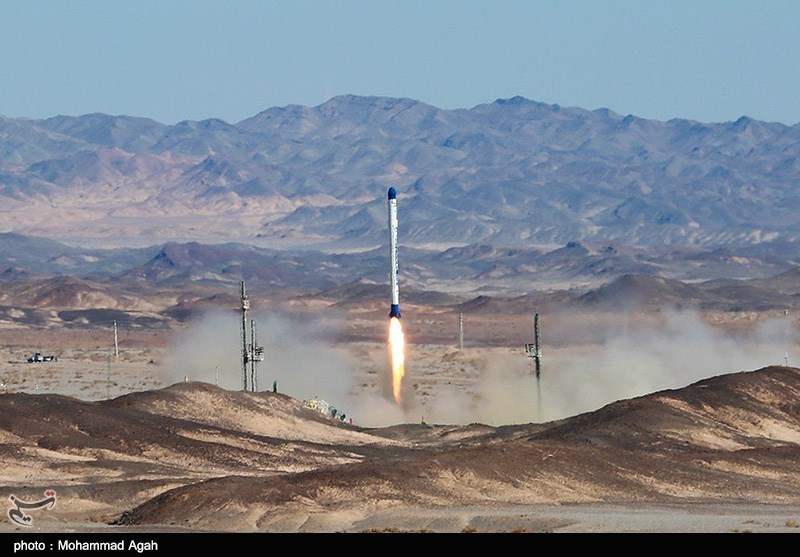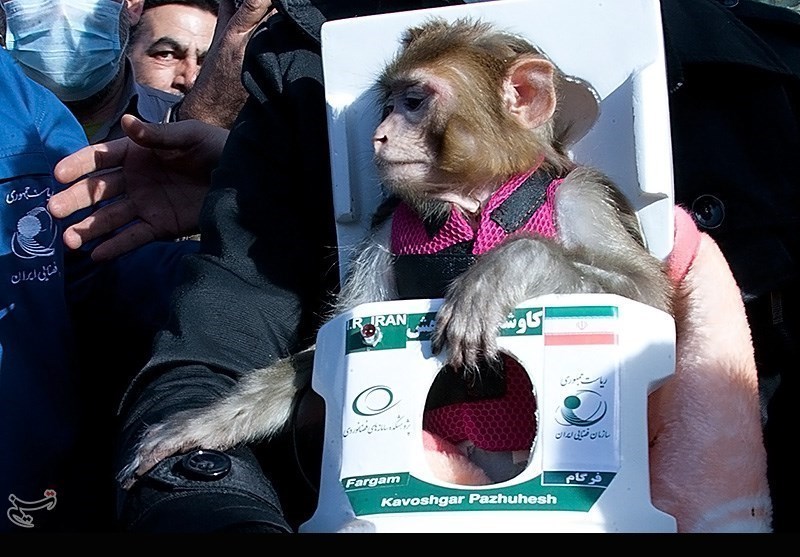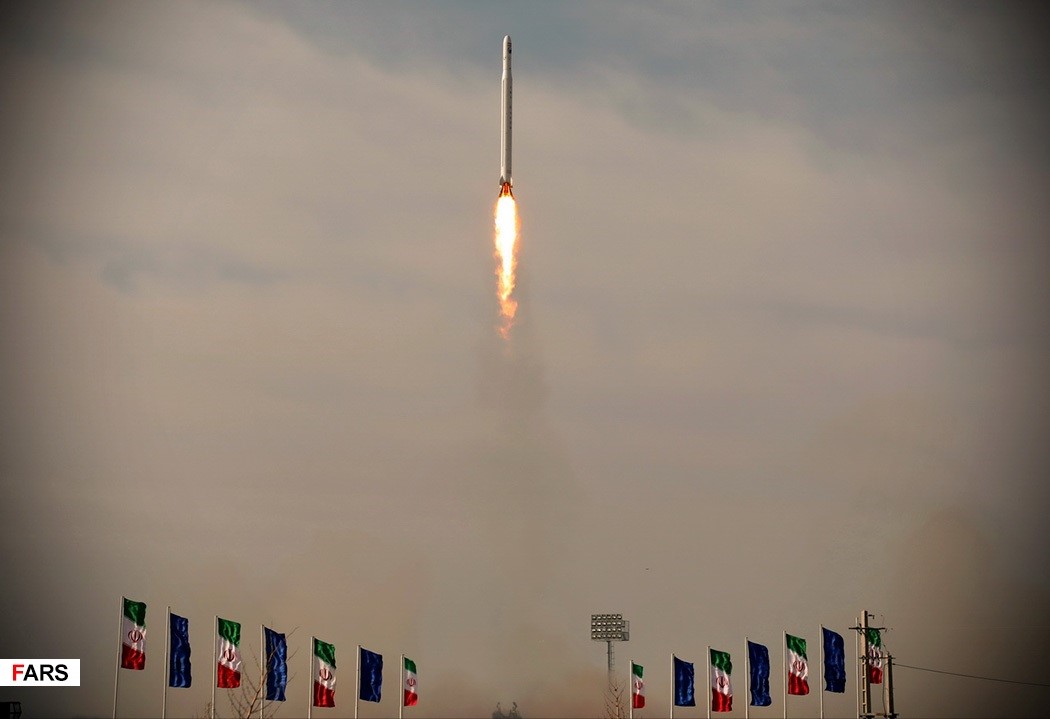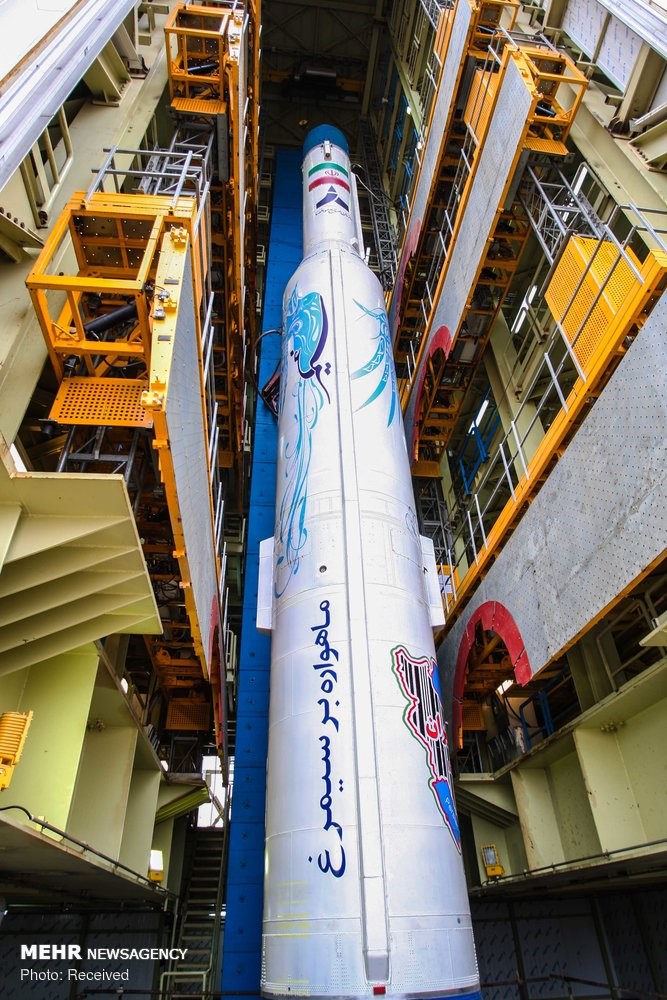Since 2003, Iran’s space program has steadily evolved – from a limited initiative to launch research satellites into a more ambitious project to enhance space reconnaissance capabilities and test military rockets. The program, still in its adolescence, has progressed through three phases: research and development with assistance from Russia beginning in the late 1990s; satellite launches for civilian research beginning in 2009; and a military program unveiled in 2020.
Iran has repeatedly claimed that the space program is to enhance science, communication capabilities and environmental research. But the United States has claimed that the satellite launches are cover for ballistic missile tests. As part of its space program, the Islamic Republic has also tested rockets that could be repurposed into long-range missiles. “Tehran’s pursuit of a national space program supports both civilian and military goals, including boosting national pride, economic development, and military modernization,” the Defense Intelligence Agency reported in February 2019.

Iran successfully launched the Fajr (Dawn), its fourth homemade satellite, into orbit on Feb. 2, 2015
Created in 2003, the Iranian Space Agency (ISA) answers directly to the Supreme Space Council, which is chaired by the president and presided over by the defense minister. The agency initially received extensive help from Russia, including materiel, scientific training and use of launch sites. But Iran developed domestic spaceflight capabilities in February 2009, when it became the first Islamic country – and ninth country in the world – to launch a satellite into orbit. Over the next decade, Iran successfully launched four research satellites and tested two space rocket variants:
- the Safir (Ambassador), a rocket capable of launching satellites that weigh 50 kg or 110 pounds. It can lift a satellite 350 km or 217 miles into orbit. Its technology is based on a Shahab-3 missile, which was made from technology provided by Russia.
- the Simorgh (Phoenix), a rocket capable of carrying satellites that weigh 250 kg or 550 pounds. It can lift a satellite 500 km or 310 miles into orbit. Its technology is largely home-grown.
The third turning point was in April 2020, when the Islamic Revolutionary Guard Corps (IRGC) launched the country’s first military reconnaissance satellite into orbit. The launch indicated the existence of a military space program. The satellite was launched by the Qased (Messenger), a three-stage rocket that used more advanced technology than in previous rocket tests. Secretary of State Pompeo condemned the launch as proof of Iran’s military ambitions in space. “For years, Iran has claimed its space program is purely peaceful and civilian,” Pompeo said. ”The most recent military launch, which was developed and conducted in secret, proves that these statements were lies.”
Watch: #Iran’s state television IRINN broadcasts footage of the military satellite, dubbed the Nour, the country’s Revolutionary Guards say was “successfully” launched from the Markazi desert.https://t.co/X6wqo9yc0u pic.twitter.com/b0uSJiBVYK
— Al Arabiya English (@AlArabiya_Eng) April 22, 2020
Phase One: Russian Assistance
Starting in the 1990s, Russia played a critical role in the early development of the Iranian space program. In 1997, Moscow reportedly sold Tehran components from the SS-4, a Soviet medium-range ballistic missile, to help build its own missiles. Russia “helped Iran save years” in the development of the Shahab-3 missile, which formed the basis of the Safir space rocket, the Central Intelligence Agency (CIA) reported in 2000.
After the Iranian Space Agency was created in 2003, Russia trained Iranian rocket scientists, provided satellite components and allowed the Islamic Republic to use Russian spaceports for launches. In October 2005, Russia and Iran jointly launched a satellite, the Sina-1, from Plesetsk, Russia. The satellite was built by a Russian company and launched aboard a Russian-made Kosmos 3M rocket.
Under pressure from the other major world powers, Russia curtailed its cooperation with Iran in the late 2000s. In March 2008, the U.N. Security Council passed Resolution 1803, which restricted the transfer of “sensitive technologies” that could be used for Iran’s nuclear and ballistic missile programs. In June 2010, the Security Council passed Resolution 1929, which banned all U.N. member states from transferring any ballistic missile technology. By 2011, Moscow said that it would no longer launch Iranian satellites from Russian launchpads and paused manufacture of satellites for Iran.
Phase Two: Domestic Civilian Program
President Mahmoud Ahmadinejad, who served from 2005 to 2013, made domestic space launches a national priority. In February 2008, he personally led the countdown for the launch of the Kavoshgar-1 (Researcher) rocket. “We need to have an active presence in space,” Ahmadinejad said. “We witness today that Iran has taken its first step in space very firmly, precisely and with awareness.”
Under Ahmadinejad, Iran took major strides in civilian spaceflight. It launched three homemade satellites into orbit, inaugurated a new spaceport, opened a center for tracking space objects and claimed to have sent a monkey to space and returned it safely to Earth. Ahmadinejad later declared that Iran would place an astronaut into orbit by 2020 and on the moon by 2025. He even volunteered to be the first Iranian sent to space. “I'm ready to be the first Iranian to sacrifice myself for our country's scientists,” he said, according to the official IRNA news agency.

Iranian scientists claimed to have sent a monkey into space and returned it to earth safely
After Ahmadinejad left office, Iran’s space ambitions took a backseat to economic issues. Following President Hassan Rouhani’s election in 2013, Iran paused most rocket and missile launches during negotiations with the major world powers over the country’s nuclear program. Iran resumed its rocket and missile tests after the Joint Comprehensive Plan of Action (JCPOA) in 2015, but Tehran scraped plans for a human space flight due to the exorbitant cost.
Iran’s space program has had many problems. Between 2008 and 2019, more than two-thirds of Iranian satellites failed to enter orbit. By comparison, the other nine space programs—in Asia, Europe and North America—failed to launch only five percent of the time. In 2019, Iran failed in three back-to-back rocket launches, which led the head of Iran’s missile program to accuse the United States of sabotaging the launches. President Donald Trump denied U.S. involvement. “The United States of America was not involved in the catastrophic accident during final launch preparations for the Safir SLV Launch at Semnan Launch Site One in Iran,” he tweeted. “I wish Iran best wishes and good luck in determining what happened at Site One.”
The United States of America was not involved in the catastrophic accident during final launch preparations for the Safir SLV Launch at Semnan Launch Site One in Iran. I wish Iran best wishes and good luck in determining what happened at Site One. pic.twitter.com/z0iDj2L0Y3
— Donald J. Trump (@realDonaldTrump) August 30, 2019
Phase Three: Military Program
The IRGC’s launch of a reconnaissance satellite in April 2020 unveiled a military space program. The Noor-1 (Light) satellite was launched from an IRGC base near the Imam Khomeini Spaceport, which houses Iran’s civilian space program. The launch employed the new Qased rocket. It was the first time Iran had successfully used a three-stage rocket.
Hossein Salami, the IRGC commander, called the launch a “leap” in Iran’s space capabilities. “The world’s powerful armies do not have a comprehensive defense plan without being in space,” he said. “Achieving this superior technology that takes us into space and expands the realm of our abilities is a strategic achievement.”

The IRGC launched its first military satellite on April 22, 2020
The Trump administration said that the launch incorporated technologies interchangeable with those of intercontinental ballistic missiles. Secretary of State Pompeo demanded that Iran “be held accountable” and urged other nations to help constrain Iran’s “dangerous” space program. Britain, France and Germany – the three European parties to the JCPOA – joined the United States in condemning the launch.
But the United States faced pushback from Russia. Vassily Nebenzia, the Russian ambassador to the U.N., accused the Trump administration of using the launch to advance its maximum pressure policy. “The ongoing attempts of the United States side to deprive Iran of the right to reap the benefits of peaceful space technology under false pretexts are a cause for serious concern and profound regret,” Nebenzia wrote the Security Council.
Iran used the Noor-1 satellite to track its own ships around the world and to spy on U.S. forces in the Gulf. The Revolutionary Guard said that it had tracked Iranian oil tankers carrying fuel as far as Venezuela. It also monitored from space the IRGC naval war games in the Strait of Hormuz. On July 29, Iran released photos of al Udeid airbase in Qatar, headquarters of U.S. Central Command, that it claimed had been taken by the Noor-1 satellite.
U.S. Response

The U.S. intelligence community has warned about the potential of Iran’s space program. In October 2000, the Central Intelligence Agency said that Iran’s plans to build the Shahab-4 space rocket could easily be converted into a ballistic missile. “The transfer of ballistic missile technology from Russia to Iran was substantial [in 2000], and in our judgment will continue to accelerate Iranian efforts to develop new missiles and to become self-sufficient in production,” CIA Director George Tenet testified to Congress in February 2001.
Several U.S. administrations have expressed alarm about Iran’s space program, especially the Safir and the Simorgh. The Safir could have a range of up to 1,200 miles (2,000 km)—up from 217 miles—if it is converted into a ballistic missile. The Simorgh could have a range of up to 2,490 miles (4,000 km)—up from 310 miles—if it is converted into a ballistic missile, according to an analysis by the Center for Strategic and International Studies in 2018.
The Bush Administration
The Bush administration reportedly started a covert program to sabotage Iranian missile launches. The plan called for slipping defective parts in the supply chain and factories of Iranian missile launchers. The “left of launch” program sabotaged missiles before they were fired. But it reportedly did not target the nascent space program.
U.S. officials expressed greater concern with the space program after Iran launched its first rocket capable of carrying a satellite into orbit in February 2008. “The kinds of technologies and capabilities that are needed in order to launch a space vehicle for orbit are the same kinds of capabilities and technologies that one would employ for long-range ballistic missiles,” the State Department said.
In October 2007, President George W. Bush announced he would deploy missile defense systems to Europe to defend it against Iranian ballistic missiles. “Iranian officials have declared that they are developing missiles with a range of 1,200 miles, which would give them the capability to strike many of our NATO allies,” President Bush said at National Defense University.
The Obama Administration
President Barack Obama reportedly expanded the covert operation to disrupt Iran’s missile and space programs. The “left of launch” program infiltrated space rocket supply chains and inserted them with faulty parts. President Obama also reportedly ordered cyberattacks to slow Iranian missile development.
The administration mobilized international support to curtail Iran’s space and missile programs. In 2010, the Obama administration won support for U.N. Resolution 1929, which banned all transfers of ballistic missile technology to Iran. In 2015, the nuclear deal—negotiated between Iran and the world’s six major powers—stipulated that the U.N. embargo on transferring ballistic missile technology would continue until 2023.
In 2016, the U.S. intelligence community estimated that Iran’s civilian space program would allow research on ballistic missiles even under the JCPOA. “Iran’s progress on space launch vehicles—along with its desire to deter the United States and its allies—provides Tehran with the means and motivation to develop longer-range missiles, including ICBMs,” Director of National Intelligence James Clapper testified to Congress in February 2016.
The Trump Administration
The Trump administration reportedly accelerated covert operations to sabotage Iran’s space launches and missile tests. As CIA Director, Mike Pompeo reportedly increased resources for the “left of launch” program. In June 2019, President Trump reportedly ordered a cyberattack on Iranian missile launchers. The cyberattack was reportedly in response to Iran’s attacks on oil tankers in the Strait of Hormuz.

Sailors at the Fleet Operations Center at U.S. Fleet Cyber Command
In September 2019, the Trump administration sanctioned the Iranian Space Agency and two of its research arms, the Iranian Astronautics Research Institute and the Iran Research Center. Secretary of State Pompeo called Iran’s civilian space program a “cover” for its ballistic missile program. “The United States will not allow Iran to use its space launch program as cover to advance its ballistic missile programs,” he said.
To shield allies from Iranian missiles, Trump also provided additional Patriot missile defense systems to Saudi Arabia, the United Arab Emirates and Iraq. The Pentagon also deployed one Terminal High Altitude Area Defense (THAAD) unit, the most advanced U.S. missile defense system, to Saudi Arabia after Iran attacked the Abqaiq oil facility in September 2019.
Timeline
April 2003: The Iranian Space Agency (ISA) is founded. Its mission is to coordinate Iran’s space activities and technological advancements.
Oct. 27, 2005: Iran and Russia jointly launched a satellite, the Sina-1, into orbit. The satellite carried photographic and telecommunications equipment for scientific research. The satellite was built by a Russian company, the launchpad was located in northern Russia and the rocket was a Russian-made Kosmos 3M.
Feb. 25, 2007: Iran launched its first homemade rocket capable of reaching space. The rocket was based off the Shahab-3 ballistic missile.
Feb. 4, 2008: Iran opened a new space launch facility in Semnan Province. It fired a research rocket, the Kavoshgar-1 (Researcher), to mark the occasion. President Mahmoud Ahmadinejad said that Iran needed “an active presence in space.”
Sep. 7, 2008: A scientific research satellite, the Enivornment-1, was launched on a Chinese rocket. The project was a collaboration between Iran, China and Thailand.
Aug. 17, 2008: Iran launched a rocket capable of carrying a homemade satellite.
Feb. 3, 2009: Iran launched its first homemade satellite, Omid (Hope), into orbit. The satellite was carried by a Safir (Ambassador) rocket. Iran’s foreign minister said the satellite was “for purely peaceful purposes” such as gathering environmental and climate data.
July 2010: Russia said that it would no longer launch Iranian satellites into orbit.
June 15, 2011: Iran launched its second homemade satellite, Rasad (Observation), into orbit. Iranian officials said the satellite would be used for topography and high-resolution mapping.
Feb. 3, 2012: Iran launched a third homemade satellite, Navid (Promise of Science and Industry), into orbit. Hamid Fazeli, the head of the ISA, said that the satellite would collect data for weather forecasting and predicting natural disasters.
May 23, 2012: Iran failed to launch its Fajr (Dawn) satellite into orbit.
September 2012: Satellite imagery showed what may have been a catastrophic failed launch from Semnan, although no official Iranian statement was made.
Jan. 28, 2013: Iran claimed it had successfully sent a monkey into space and returned it safely to Earth. Observers expressed doubt when images released by the government depicted a different animal than had been launched into orbit.
February 2013: Satellite imagery presented at a conference on missile defense by Israel’s Institute for National Security Studies (INSS) suggested another failed space launch.
June 9, 2013: Iran opened a new center for tracking objecting in space, such as foreign satellites.
October 2013: Satellite imagery presented at a conference on missile defense by Israel’s Institute for National Security Studies (INSS) suggested yet another failed space launch.
Dec. 14, 2013: Iran claimed a second monkey, Fargam, had been sent into space and returned safely to Earth.
Feb. 2, 2015: Iran launched its fourth homemade satellite, Fajr (Dawn), into orbit.
April 19, 2016: The Simorgh (Phoenix) rocket performed a “suborbital test flight.” A U.S. defense official said that the flight was “either an unsuccessful launch or a test of a third stage” rocket.
July 17, 2017: Iran claimed to launch its fifth homemade satellite on a Simorgh (Phoenix) rocket. But no satellite was detected in orbit, and U.S. officials concluded the launch was a “catastrophic failure.”
Jan. 14, 2019: Iran failed to launch a satellite into orbit using its Safir (Ambassador) rocket.
Feb. 5, 2019: Satellite imagery showed that another attempted space launch in Iran failed. It was Iran’s second failed space launch of 2019.
Aug. 29, 2019: A rocket exploded on its launchpad at the Imam Khomeini Space Center. The explosion was Iran’s third failed space launch of 2019.
Feb. 9, 2020: Iran failed to put a communications satellite into orbit using its Simorgh (Phoenix) rocket.
April 22, 2020: Iran launched its first military reconnaissance satellite, the Noor-1 (Light), into orbit. The satellite was launched from a facility in Iran’s remote Central Desert.
June 8, 2020: The IRGC tracked oil tankers carrying fuel to Venezuela with the Noor-1 satellite, according to commander of the Revolutionary Guards' space division.
July 28-29, 2020: From space, the IRGC monitored Iranian war games held in the Persian Gulf. It also released photos of the Al Udeid Air Base in Qatar allegedly taken by the Noor-1 satellite.
September 14, 2020: Iran claimed that the Pars-1, its most advanced satellite, would be delivered to the Iranian Space Agency within a week. The Pars-1 could take photos in space at night.
February 1, 2021: Iran successfully tested a new space rocket, the defense ministry said. The Zoljanah was similar to the Simorgh; it could lift a 220 kg (or 485 pounds) satellite 500 km (or 310 miles) into orbit. The rocket was launched from a facility in Semnan province.
#Iran: State TV just released video of test launch of Zoljanah hybrid solid-liquid SLV pic.twitter.com/RuWVhH7mro
— Khosro Kalbasi (@KhosroKalbasi) February 1, 2021
June 10, 2021: Russia intends to provide Iran with an advanced imaging satellite, the Washington Post reported. The Kanopus V satellite would allow Iran to track civilian and military targets using a high resolution camera. On June 12, Russian President Vladimir Putin denied the report as "nonsense."
June 12, 2021: Iran failed to launch a satellite into orbit, CNN reported. "U.S. Space Command is aware of the Iranian rocket launch failure which occurred early June 12th," Pentagon spokesman Lt. Col. Uriah Orland said. The U.S. military also told CNN that Iran's Noor military satellite launched in April 2020 was "not operational." Satellite imagery captured on June 20 indicated that Iran might try another launch.
Andrew Hanna is a program specialist at the U.S. Institute of Peace.
